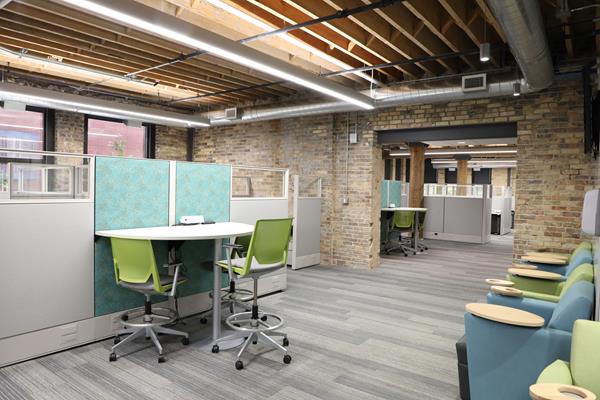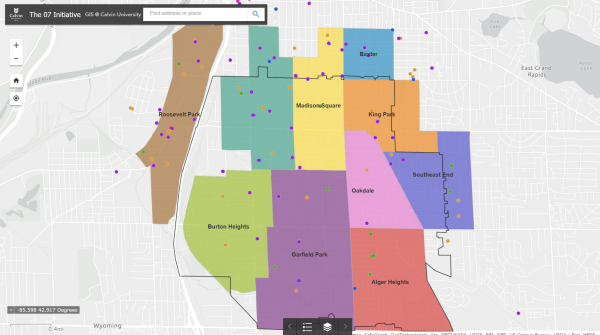Grand Rapids to buy riverfront land
The landscape along the Grand River in downtown Grand Rapids may soon be reimagined. In a proposed $10 million deal with Kent County, Michigan State University and Grand Rapids’ parking system, the city of Grand Rapids plans to acquire six parcels of land adjacent to the river.
The purchase will be made in order to remove the dam, increase public access to the river and increase opportunities for development.
The city is seeking a $7.5 million grant from the Michigan Department of Natural Resources Trust Fund to help contribute to the project.
The land acquisition, if attained, will enable the city to improve current floodwalls without creating a high, inaccessible concrete wall. Instead, the city is looking to repurpose 15 floodwall areas with a stepped design.
The design would enable easier access to the river for kayakers and fishers, and would, as flood levels rise, contain surging waters better than the solid walls do now.
“We are envisioning a stepped approach to development of the site that will provide active access, gathering spaces, active-use space and spectator space for water events and will accommodate other public uses including connections to riverside trails farther upstream,” a city official reported.
Land along the north side of Monroe Avenue will be transformed into a park, and the existing parking lot in the considered lot will be demolished in order to transform riverside land into green space.
The Federal Emergency Management Agency called on Grand Rapids and cities across the nation to improve their flood walls after Hurricane Katrina devastated New Orleans in 2004 due to improper floodwalls.
The city of Grand Rapids refused, however, as they had invested in improving them to prior standards one year earlier.
The damaging floods a few years ago proved that improvements to the current flood protection system is necessary, however.
According to an MLive investigation, Mayor Heartwell delayed declaring a state of emergency during the April 2013 floods to avoid the perception that the city acknowledged that the floodwalls were not high enough.
The new city plan acts as a compromise between city and federal officials by improving safety conditions, as well as accessibility and increased aesthetic appeal of the downtown area
The plan will integrate environmental interests by assisting the reinstallation of rapids in the river, as well as addressing the economic concerns of developers.
Many of the sites available for development are underutilized, including one site that currently holds a city salt dome and trash collecting services.
Many city leaders, including Rosalynn Bliss, city councilwoman and mayoral candidate, advocate selling the land to developers, who may make better use of the riverfront land.
As the plan moves forward, many city leaders are hopeful about the future development of downtown and its relation to the river. Eric DeLong, deputy city manager, said, “As we re-imagine and recreate our river, the more public access we can generate the better.”







